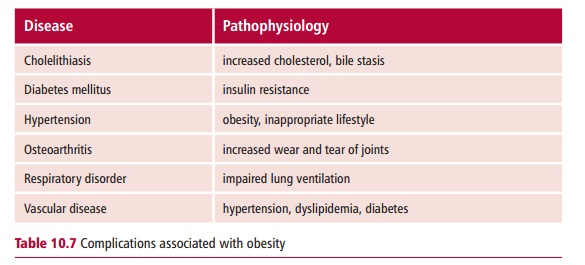Chapter: Biology of Disease: Diet and Disease
Obesity - Nutritional Disorders
OBESITY
Obesity is diagnosed when the patient’s BMI is greater than 30
kg m–2 (MarginNote 10.3). It is characterized by an excess of
fat in the body, particularly underthe skin and is generally recognizable when
a person is 20% above their IBW. Environmental and genetic factors can
determine body weight, but overeating combined with lack of exercise are its
usual causes. Very rarely, obesity may be secondary to endocrine disease , for
example hypothyroidism that decreases energy requirements, Cushing’s syndrome
where the distribution of body fat is altered, and some hypothalamic disorders
that are associated with overeating.

A number of diseases occur more frequently in obese
individuals (Figure10.25), including
type 2 diabetes mellitus , coronary heart disease,hypertension , cholelithiasis
and osteoarthritis . Not surprisingly, mortality rates are also greater as body
weight increases. Some of the complications of obesity are listed in the Table 10.7.

The increasing incidence of obesity in many developed
countries (Figure10.26 (A)), and
particularly in children of the USA and UK (Figure
10.26 (B)),is of concern.

Related Topics